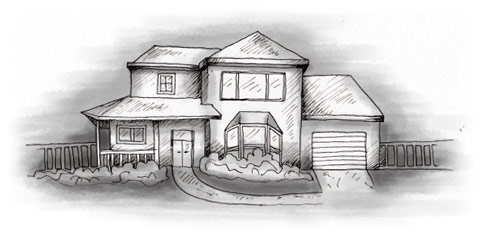Radon is a naturally occurring radioactive gas formed underground by the radioactive decay of uranium, which is present in small quantities in rocks and soils and is particularly prevalent in Ireland. It’s estimated that more than half of the radiation dose received by the average person in Ireland is due to radon.
For the majority of people, the radiation received from radon isn’t high enough to be a cause for concern. Radon surfacing in the open air is quickly diluted to harmless concentrations. However, when it enters an enclosed space, such as a house, it can sometimes build up to dangerous concentrations.
The acceptable limit for radon concentration (known as the ‘reference level’) is 200 becquerels per m3 of air (200Bq/m3). It has been shown that prolonged exposure to concentrations of radon above this level increases the chance of contracting lung cancer; in a minority of homes and other buildings in Ireland with very high radon levels, there’s a significant health risk for occupants.
To put this risk into perspective: whereas the average person in Ireland has a 3 per cent risk of contracting fatal lung cancer, someone living in a building which is above the reference level may have a 4 or 5 per cent risk of the same fate.
Recognising the possible danger of radon, the government has undertaken a survey of the whole country which identifies the areas of greatest risk. There are high risk areas in most parts of the country, but Counties Carlow and Sligo appear to have more such areas than other parts of the country. A copy of the survey and a leaflet entitled Radon Radiation in Homes can be obtained free of charge from the Radiological Protection Institute of Ireland (Tel. 01-269 7766; www.rpii.ie ). Note also that building regulations introduced in December 1997 require all new houses to have a radon ‘sump’ and those in high risk areas a radon ‘barrier’.
There are three important points to bear in mind when considering the possible effects of radon gas on your choice of property:
- The health danger of high radon levels is small, particularly if you’re only spending short periods in your Irish home.
- Radon cannot be seen or smelt but it can easily be detected by special equipment. The necessary equipment can be hired from the Radiological Protection Institute. However, readings should be spread over at least three months, so it may not be possible to obtain a reliable measurement before you buy a property.
- Even if a property is found to contain a high level of radon gas, there are ways of reducing it to a safer level. Various measures that can be taken are outlined in a guide, Radon in Buildings, available from Government Publications (Tel. 01-679 3515 or 01-661 3111).

